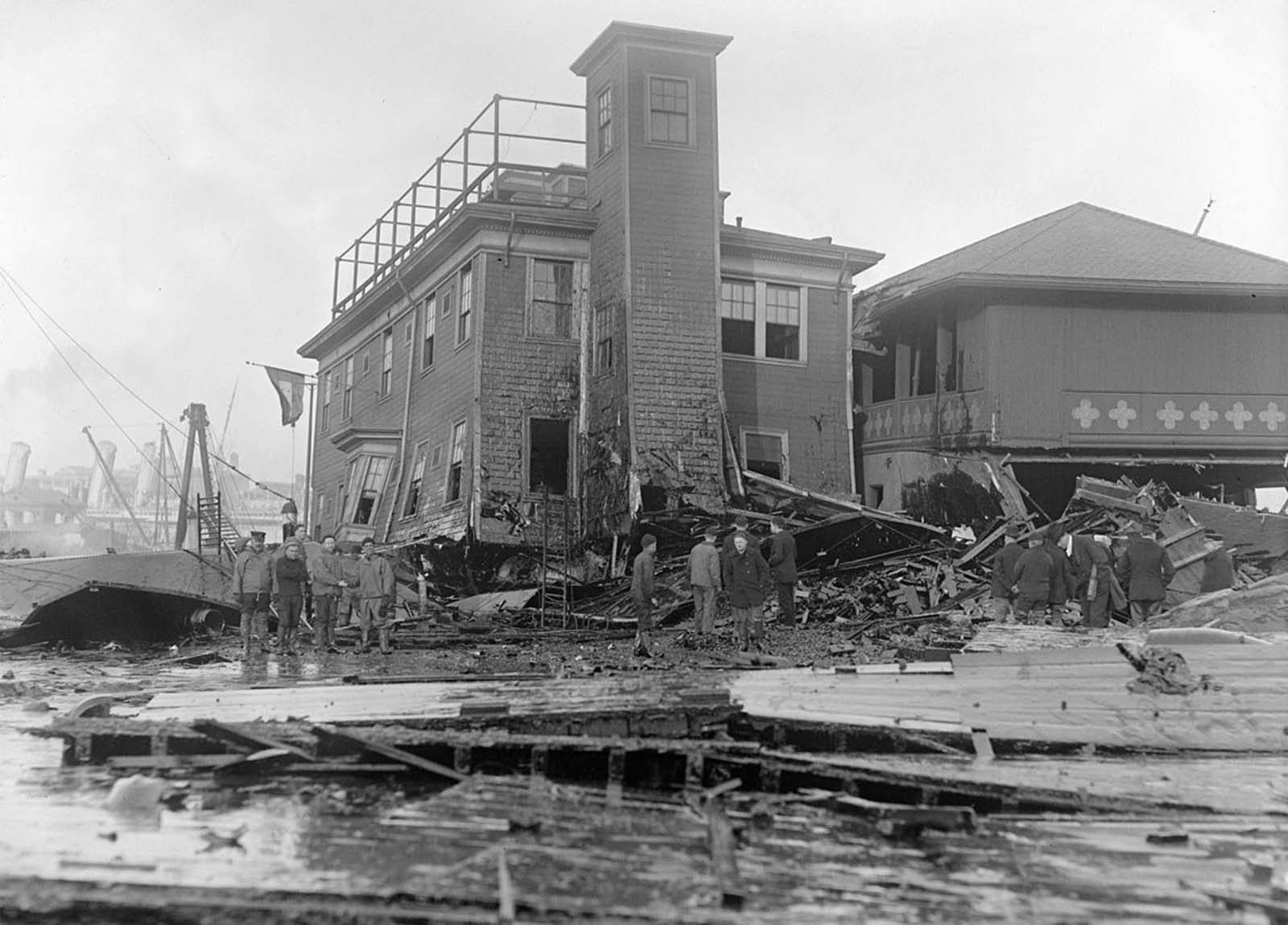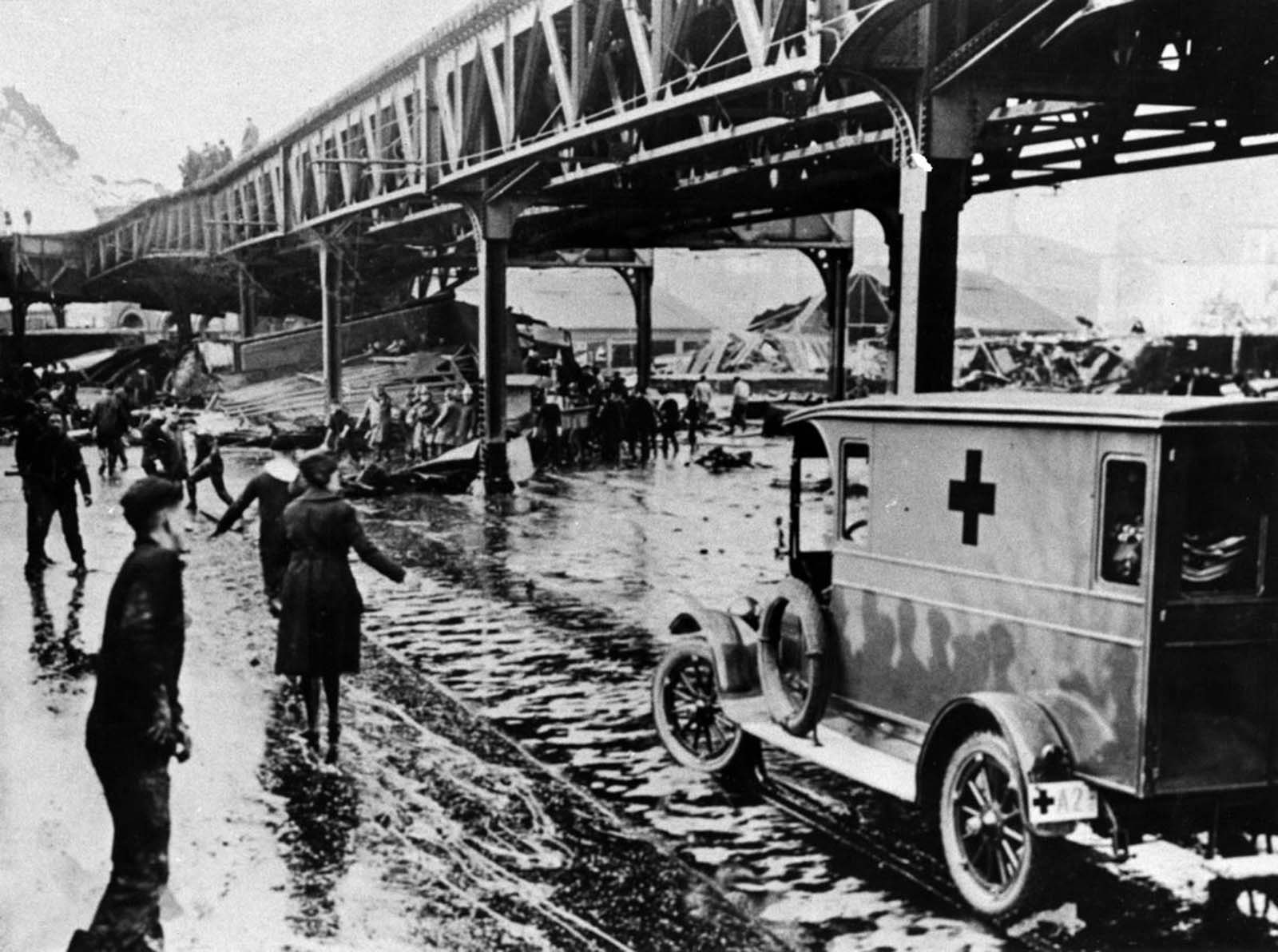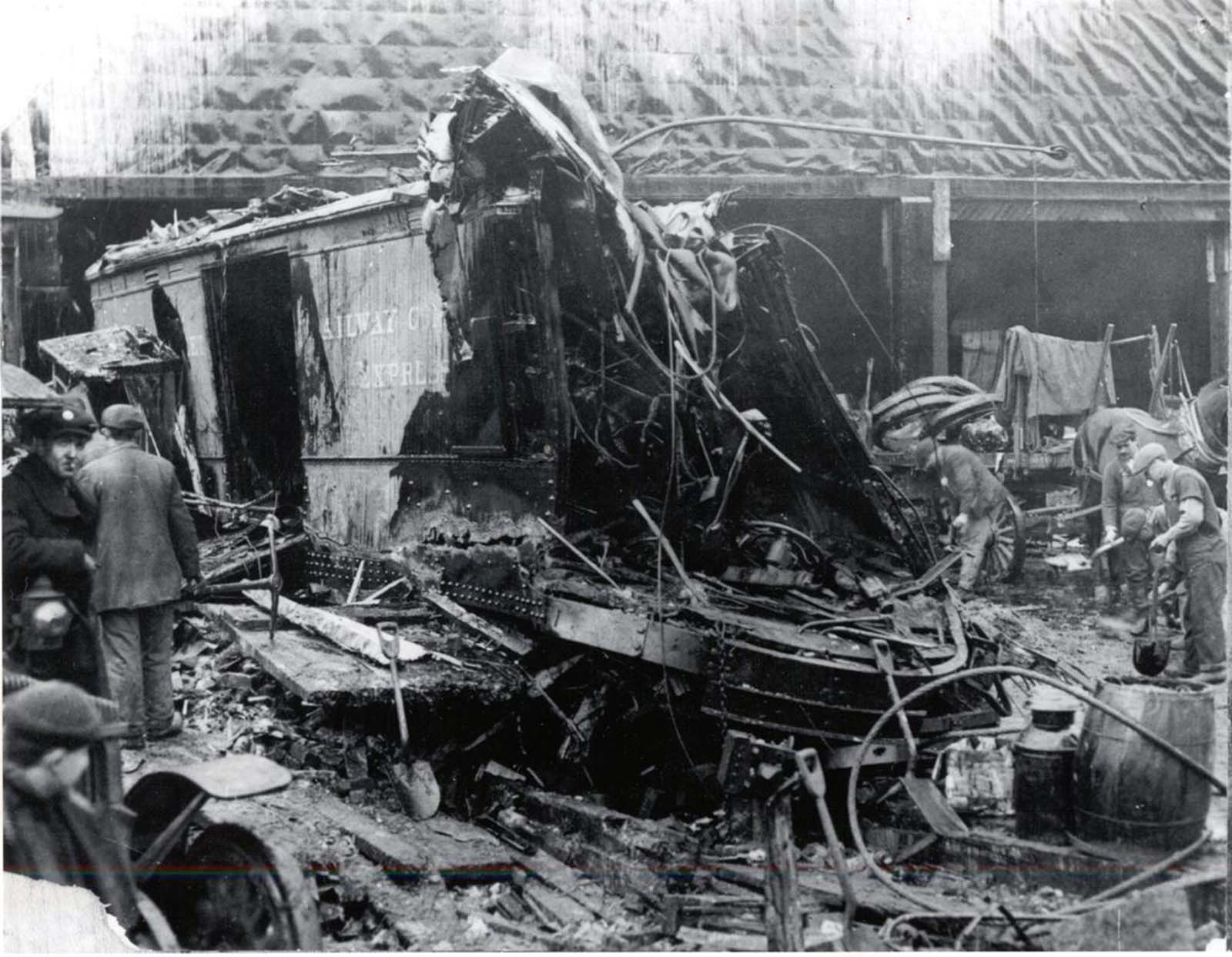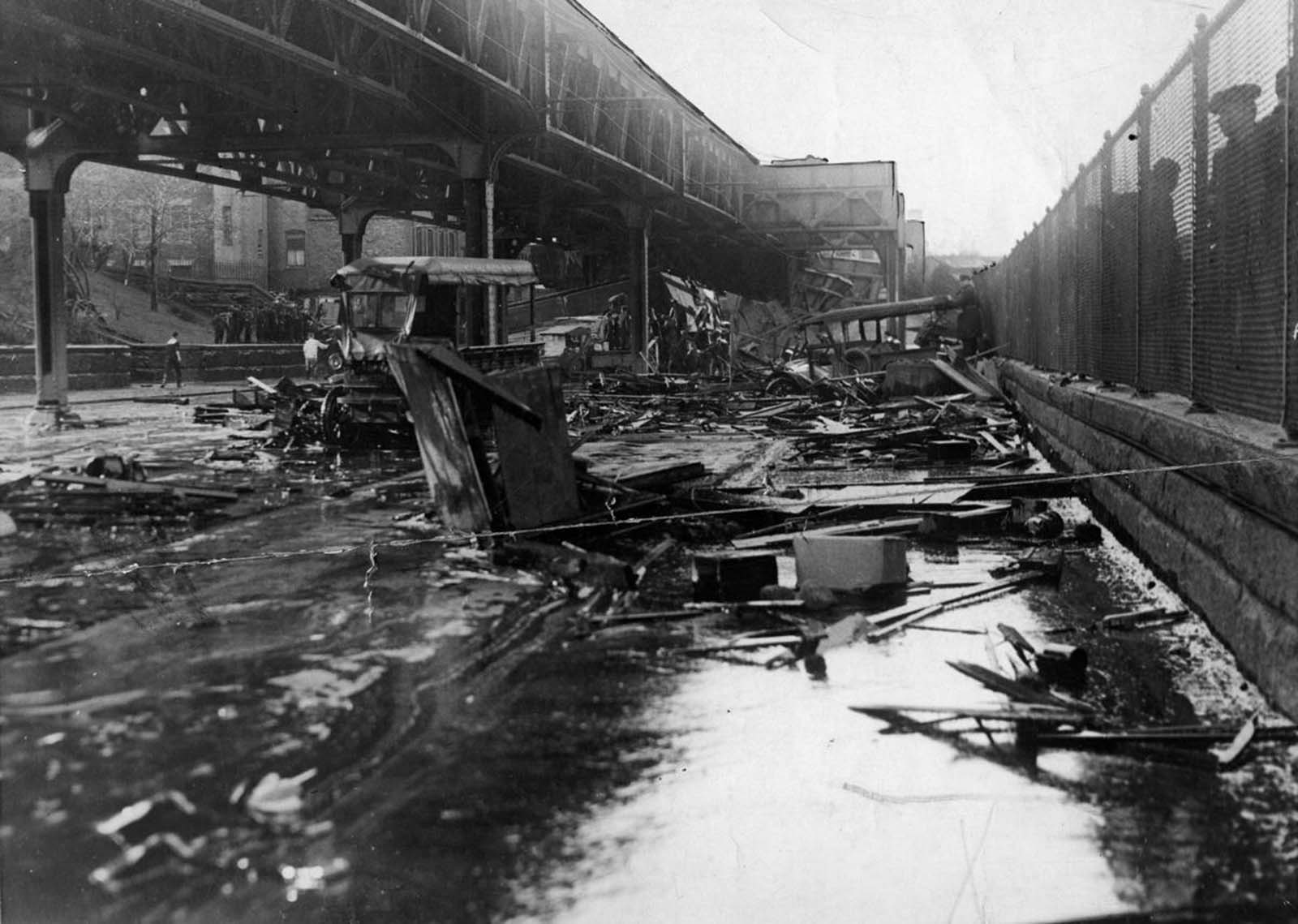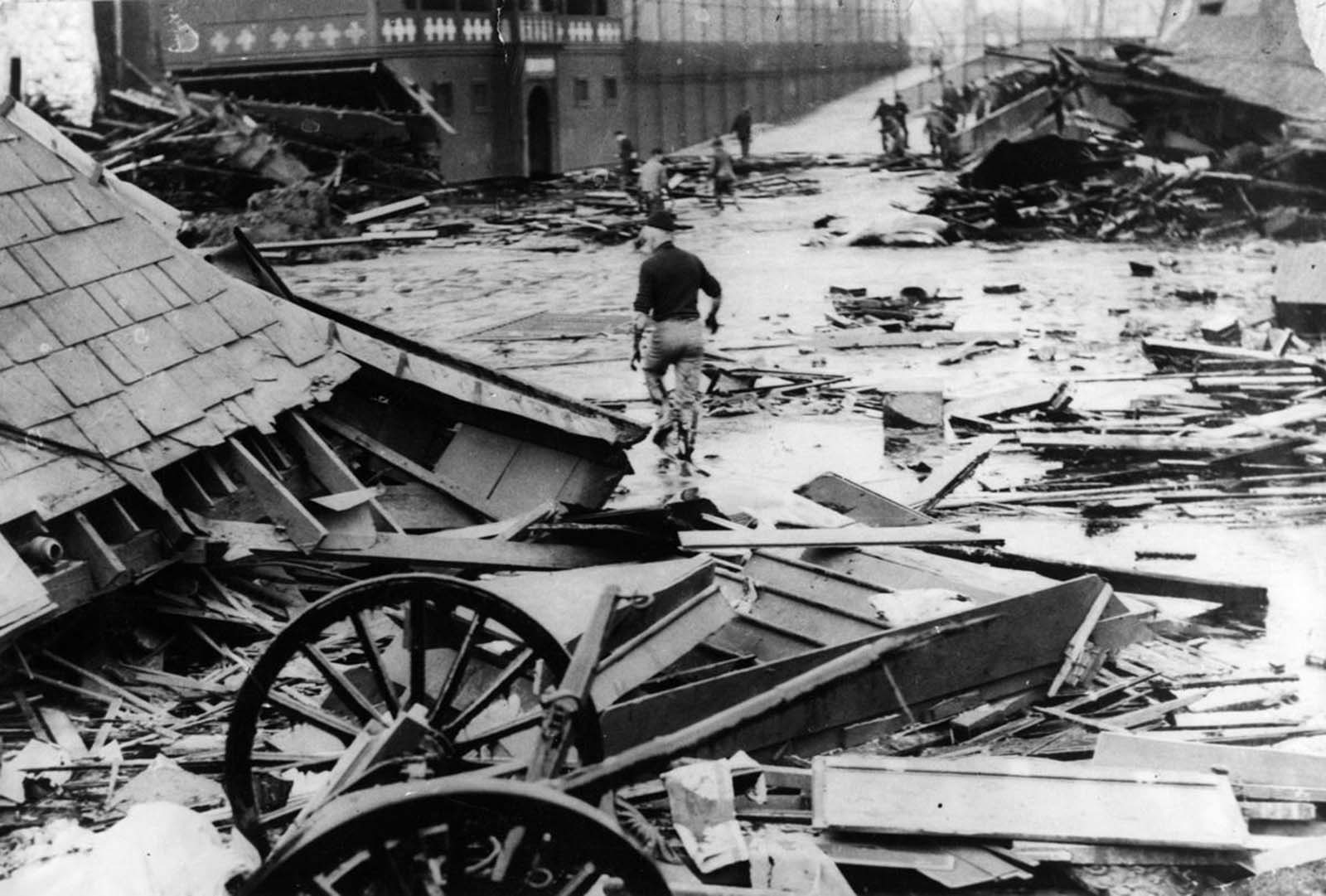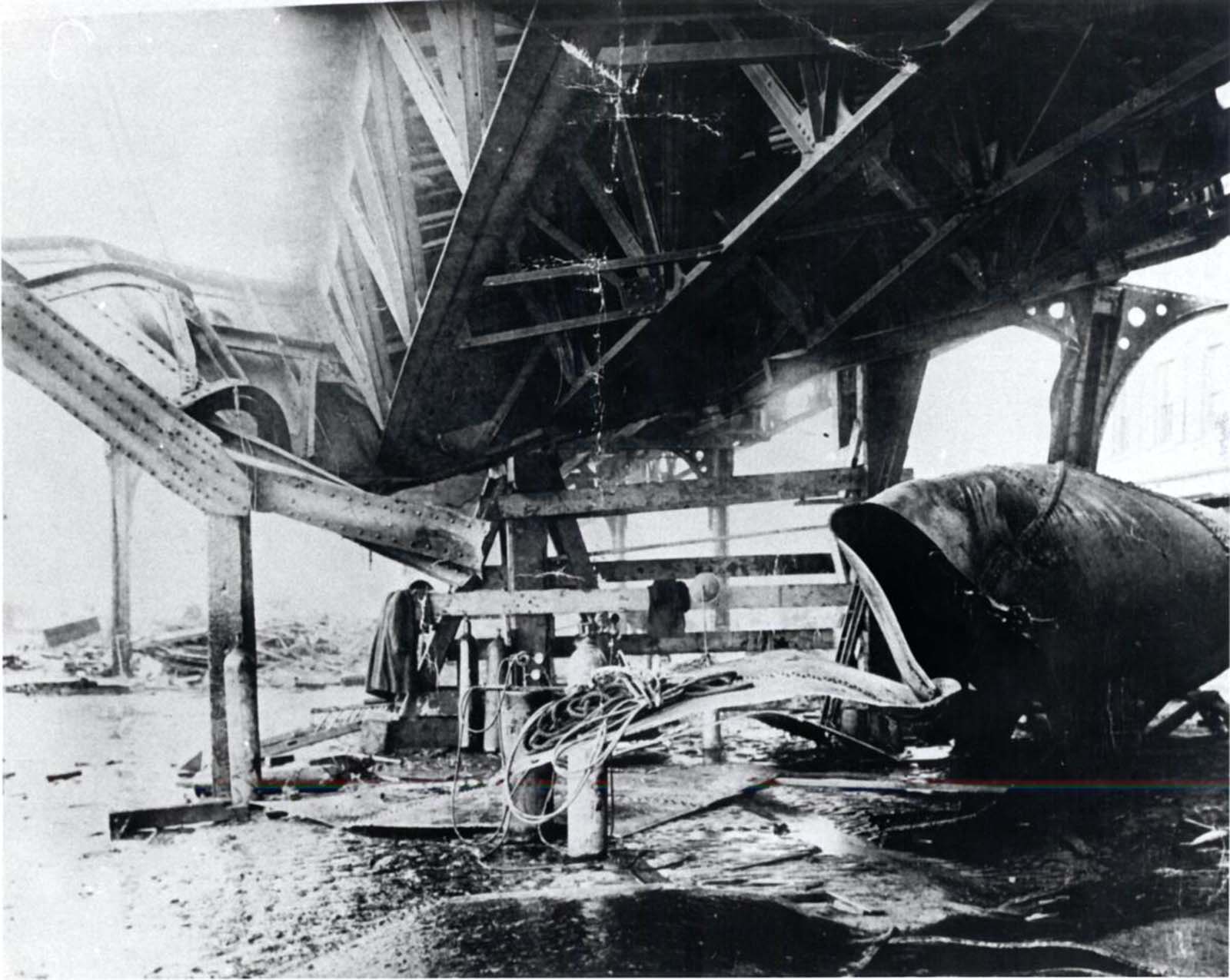The wave killed young Pasquale Iantosca, smashing a railroad car into the ten-year-old. It pinned Walter Merrithew, a railroad clerk on the Commercial Street wharf, against the wall of a freight shed, his feet 3 ft off the floor. He hung there as he watched a horse drowning nearby. The wave broke steel girders of the Boston Elevated Railway, almost swept a train off its tracks, knocked buildings off their foundations, and toppled electrical poles, the wires hissing and sparking as they fell into the brown flood. The Boston Globe reported that people ‘were picked up and hurled many feet. Rivets popping from the tank scourged the neighborhood like machine gun bullets, and a small boat was found slammed through a wooden fence like an artillery shell. By the time it passed, the wave had killed 21 people, injured 150, and caused damage worth $100 million in today’s money. All caused by molasses. At the time, molasses was a standard sweetener in the United States, used in cooking and in fermentation to make ethanol, which in turn could be made into a liquor used as an ingredient in munitions manufacture, an aspect of the business that had been booming during the First World War. First on the scene were 116 sailors from the lightship USS Nantucket that was docked nearby. They were soon joined by Boston police, Red Cross workers and army personnel. When Suffolk County medical examiner George Magrath arrived, several bodies had already been pulled from the molasses. He said they looked ‘as though covered in heavy oil skins … eyes and ears, mouths and noses filled’. A makeshift hospital was set up at Haymarket Relief Station about half a mile from the waterfront, and volunteers removed molasses from victims’ noses and mouths so they could breathe. Those already on duty were soon covered from head to foot with brown syrup and blood,’ the Boston Post reported. ‘The whole hospital reeked of molasses. It was on the floors, on the walls, the nurses were covered with it, even in their hair.’ At the destroyed city stables, police shot injured horses trapped in the molasses. The clean-up eventually took some 87,000 man-hours. Fire department pumps groaned as they removed thousands of gallons of molasses from cellars. Workers used chisels, brooms and saws to break up the hardening gunk. The harbor water, used to flush the streets clean, was brown until the summer. Meanwhile, rescue workers, sightseers, and residents carried the gooey brown residue on their clothes and boots to other parts of the city, making streetcar seats, trolley platforms, and public phones sticky. The whole city smelled of molasses. In February, a month after the disaster, the Chief Judge of Boston Municipal Court, Wilfred Bolster, made public the results of his investigation into the tragedy and blamed the tank itself, saying evidence indicated it was ‘wholly insufficient in point of structural strength to handle its load’. He also held USIA to be guilty of manslaughter. District Attorney Joseph Pellatier then presented evidence to a grand jury, which decided the tank had been built without a sufficient inspection of its plans and construction by the city. But the jury stopped short of charging the company with manslaughter. As a result of the tragedy, Boston city authorities began requiring that plans for all construction projects be signed off by an engineer or architect and filed with the city’s building department, a practice that soon spread throughout America. The tank was never rebuilt. The site where it stood is now a public park with bocce (Italian boules) courts and Little League baseball fields, slides, and swings. All that remains of that terrible day 90 years ago is a small plaque at the entrance of the recreational complex. Yet local residents insist a faint smell lingers to this day. They say that on warm summer days the air is still tinged with the sweet, cloying scent of molasses. (Photo credit: AP / Boston Globe Archive). Notify me of new posts by email.
Δ Subscribe




